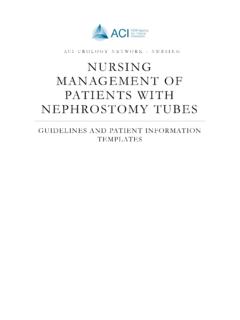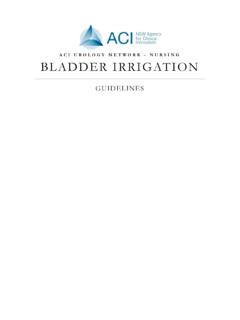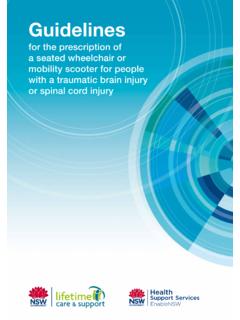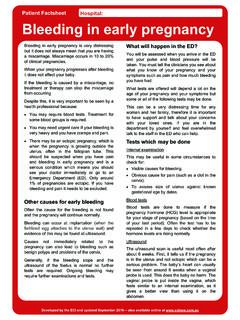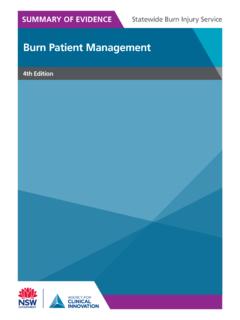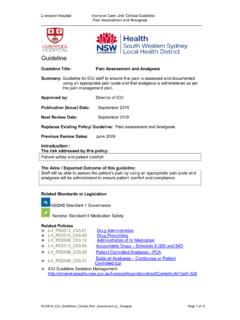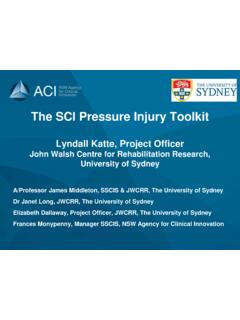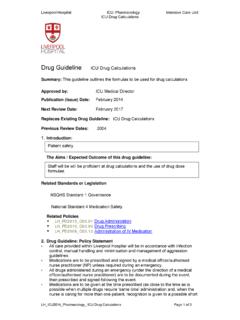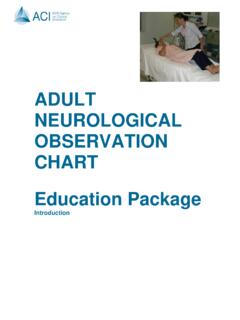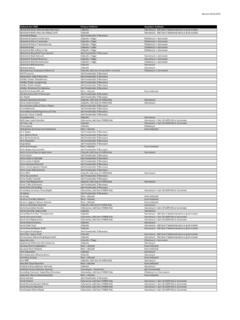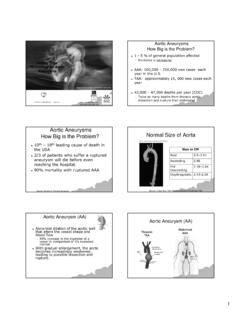Transcription of Haemodynamic Monitoring Learning Package
1 Haemodynamic Learning Package , Intensive Care Unit, Hornsby Hospital 2008 1 HORNSBY KU-RING-GAI HOSPITAL INTENSIVE CARE UNIT Haemodynamic Monitoring Learning Package Name:.. Haemodynamic Learning Package , Intensive Care Unit, Hornsby Hospital 2008 2 Package developed for use at Hornsby Ku-ring-gai Hospital by: Wanda McDermott, Clinical Nurse Educator, Intensive Care Unit, Hornsby Ku-ring-gai Hospital Jo Melloh, Clinical Nurse Specialist, Intensive Care Unit, Hornsby Ku-ring-gai Hospital Endorsed by: Halkhoree, R (Clinical Nurse Consultant, Intensive Care, Hornsby Ku-ring-gai Hospital) Clarke, J (Staff Development Educator, Hornsby Ku-ring-gai Hospital) Smith, K (Acting Nursing Unit Manager, Intensive Care, Hornsby Ku-ring-gai Hospital) Castree-Croad, S (Divisional Manager, Medicine, Emergency & Intensive Care, Hornsby Ku-ring-gai Health Service) Hawkins, L (Acting Director of Nursing and Midwifery Services, Hornsby Ku-ring-gai Hospital) Completed: December 2008.
2 Review due: December 2011 Haemodynamic Learning Package , Intensive Care Unit, Hornsby Hospital 2008 3 PAGE TABLE OF CONTENTS 4 Introductory information 6 Haemodynamic Monitoring - non- invasive and invasive 7 Arterial lines - definition and components 7 Arterial line site for insertion 8 Allen s test 8 Interpreting the numbers 9 Understanding the arterial waveform 10 Components of the arterial line waveform 12 Arterial line accuracy 12 Patency of the line 12 Levelling the transducer 13 Zeroing the transducer 14 Square wave testing 15 Trouble shooting 15 Complications 16 Dressing, line change and removal 16 Safe management of an arterial line 17 Central lines - definition and components 18 Central line site for insertion 18 Understanding the CVP measurement 20 Understanding the components of the CVP waveform 21 CVC line accuracy 21 Patency of the CVC lumen 21 Levelling the transducer 22 Zeroing the transducer 23 Trouble shooting 24 Complications 24 Dressing, line change and removal 25 Heparin locking, 25 General nursing management of a CVC line 26 References 27 Haemodynamic Worksheet arterial lines 29 Haemodynamic Worksheet central lines 32 Candidate s descriptor and matrix of the Haemodynamic Monitoring Competency Haemodynamic Learning Package , Intensive Care Unit.
3 Hornsby Hospital 2008 4 INTRODUCTORY INFORMATION Purpose of the Package This Learning Package explains invasive Haemodynamic Monitoring , focusing on arterial and central lines. The purpose of the Package is to provide, in an easily-accessible format, comprehensive information that assists with using invasive Monitoring and an understanding of the principles behind it. Expectation of Prior Learning There is an expectation that the staff member completing this Learning Package has an existing understanding of the anatomy and physiology of the cardiovascular system, and is able to perform a basic cardiovascular assessment. Target Audience It is expected that all staff caring for a patient with an arterial or central line will complete this Learning Package .
4 This Package will be useful for both the novice as well as those who would like to revise the subject. Aims and Objectives By completing this Learning Package , staff will be able to: have the knowledge and skills necessary to care for a patient with an arterial and/or central line. detect and prevent potential complications associated with an arterial and/or central line. explain the conditions under which an arterial and/or central line may be required. take an active role in their own professional development. safely care for a patient with an arterial and/or central line. Mode of Delivery This is a self-directed Learning Package , periodic cardiovascular workshops and regular in-services will be run in ICU to provide additional information. Assessment Process Successful completion of the Haemodynamic Monitoring Competency will provide sufficient evidence that the aims and objectives of this Package have been achieved.
5 The assessment must be conducted by an accredited assessor who has completed the competency. Haemodynamic Learning Package , Intensive Care Unit, Hornsby Hospital 2008 5 Directions for Use 1. Study the Learning Package . 2. Complete the worksheet. 3. Clinical Educator/Facilitator on the Unit/Ward will mark completed worksheet. 4. Assessment of competence using the Haemodynamic Monitoring Competency . 5. Completion of competency documented in staff member s Education folder. Certification for the staff member s professional portfolio will be provided on application. Haemodynamic Learning Package , Intensive Care Unit, Hornsby Hospital 2008 6 Haemodynamic Monitoring Haemodynamic Monitoring provides information about the functioning of the cardiovascular system of the patient.
6 It can be used for the diagnosis and treatment of the patient. This can be achieved by non-invasive or invasive methods, continuously or intermittently depending on the requirements of the patient. Non-invasive Monitoring does not require any device to be inserted into the body and therefore does not breach the skin. Non invasive Haemodynamic Monitoring is achieved by: blood pressure reading from a manual cuff pressure, heart rate from the electrocardiograph (ECG), temperature (surface) respiratory rate and end tidal CO2 Monitoring pulse oximetry (saturation readings) urine output and measurement of jugular venous pressure (JVP) Invasive Monitoring is achieved by the insertion of an arterial, central or pulmonary artery catheter. Arterial and central lines are used most commonly in intensive care patients.
7 A pulmonary artery catheter is used less frequently. This Learning Package will concentrate on arterial and central lines only. The use of invasive pressure Monitoring provides: a more in-depth understanding of the patient s condition, ie; helps with making a correct diagnosis continuous and accurate blood pressure measurement, allows for the adjustment of treatments in a more appropriate manner and provides continuous access for regular blood samples Comparison between a non invasive and invasive blood pressure measurement The two readings are measuring different components of the circulating blood volume. Comparing the two allows the accuracy of the arterial line reading to be assessed. An arterial line measures the amount of force exerted by circulating blood over a specific area.
8 Sphygmomanometer blood pressure readings measure flow (circulating blood volume) over a specific time. In a healthy patient there should be no greater than 10mmHg difference in the mean arterial pressure (MAP) recorded by either method. Haemodynamic Learning Package , Intensive Care Unit, Hornsby Hospital 2008 7 ARTERIAL LINES An arterial line is a cannula placed into an artery so that the actual pressure in the artery can be measured. This provides continuous measurement of systolic blood pressure (SBP), diastolic blood pressure (DBP) and mean arterial pressure (MAP). The cannula is connected to an infusion set fitted with a transducer. This line consists of 3 sections: o a hard, rigid, non-compressible section of tubing o the transducer itself and o soft, wide-bore tubing.
9 The cannula detects the flow of blood and the pressures exerted with each contraction of the heart. These mechanical pressures are transmitted through the cannula into the fluid filled rigid tubing and up to the transducer. The transducer converts this mechanical pressure into kinetic energy. The kinetic energy is then transmitted to the monitor and graphically displayed on the monitor as both numerical pressures and an arterial waveform. Hornsby Ku-Ring-Gai Hospital Intensive Care unit photograph taken by J Melloh (CNS), 2008 Arterial line site for insertion The catheter may be inserted by a qualified medical officer into the radial, femoral, brachial or pedal artery however the site of choice is the radial artery. The radial artery site is readily accessible and there is usually good collateral flow to the hand via the ulnar artery.
10 It is also easy to compress (to affect haemostasis) following removal of the arterial line. An Allen s test should be performed by the medical staff prior to the insertion of a radial arterial line. Arterial cannula hard rigid pressure tubing Transducer soft wide bore tubing connection for monitor cable connected to flush solution Haemodynamic Learning Package , Intensive Care Unit, Hornsby Hospital 2008 8 Allen s Test Elevate the hand to be cannulated and apply pressure to occlude both the radial and ulnar arteries. Observe the hand blanching as circulation is restricted. Release the pressure on the ulnar artery only and observe the hand for return of circulation (hand should reperfuse within 10 seconds). Once collateral circulation is established then it is safe to use the radial artery for an arterial line without compromising circulation to the patient s hand.
